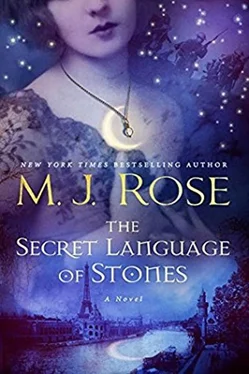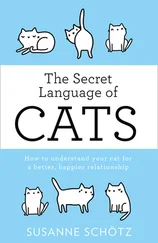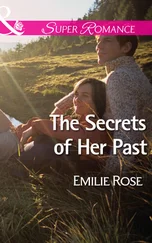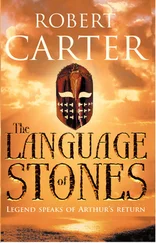No artwork decorated the walls; rather, tall mirrors, their carved frames suggesting peacock feathers, reflected back the jewels. In each corner, overlaid on the mirror, were peacocks, their jewel-toned feathers fashioned from stained glass.
Only a limited amount of Monsieur’s wares were ever on view in the shop: two or three pieces showcased in each of the two display cases in the main gallery, another in the front window, and one in the private showroom.
It was the latter that I found Madame Alouette inspecting. It held but one magnificent piece, The Tree of Life . Sculpted from silver, the oak tree stood almost three feet tall and sat in a glass case set flush with the wall. Instead of leaves, over 150 small gleaming guilloche enamel eggs, in a myriad of rich shades of green, from lime to forest pine, hung from its many branches. Each luminous egg designed and executed by Monsieur Orloff.
Like the more elaborate fantasies he had created with Fabergé for the royal family and upper crust of Russian elite, these simpler charms, set with fewer stones, were created with the same engine-turned process. Monsieur Orloff used a machine that engraved the metal with a perfect pattern of wavy or straight lines so when the enamel was poured it created an optical illusion and iridescence no other jeweler had yet been able to replicate.
“These are lovely,” Madame Alouette said. “Are they for sale?”
“They’re samples, but you can order them in any color you prefer. I have a color chart if you’d like to see it.”
We’d sold hundreds of eggs throughout the war. While some clients still bought and wore extravagant jewels, others considered it bad taste to show off during wartime and were more comfortable buying modest pieces like the eggs. Fashion in general had changed rapidly since 1914. Almost all women worked now, fulfilling jobs men at the front had once held, and our clothes needed to be more efficient. Long light-colored dresses that soiled easily and dusted the floor gave way to darker, shorter, and more streamlined skirts and blouses. Since you could see our ankles, boots gave way to shoes. Bobbed hair became not only acceptable but chic and very much in style. Even our underwear became less constricting since the steel once used to construct corsets was needed for weapons. Brassieres and undergarments made of jersey had become the norm.
“Are these eggs your work?” Madame Alouette asked.
“No, Monsieur Orloff’s. Enameling is not my forte.”
“But you make the lockets?”
I nodded. “Yes, lockets of all kinds.”
A month earlier, Monsieur Orloff had displayed a suite of mine in the window-a necklace and a pair of earrings featuring diamond crescent moons strung together with the thinnest platinum chain, interspersed with pale blue diamond stars. Each star, a locket that opened. Inside, a single teardrop ruby.
Unlike with those creations, the demand for my talismans wasn’t determined by style or gem quality. Women like Madame Alouette sought me out because of the talismans’ unseen beauty. It was the spirit and memory of their loved ones that made them exquisite, if not to a fashion connoisseur’s eye, then to the heart.
Many of the descendants of La Lune had unusual talents, each different. One of my great-great-aunts was able to move objects by visualizing them. Another could manipulate the weather. There were stories that the original La Lune had been able to camouflage herself to her surroundings and seemingly disappear.
Since childhood, I’d experienced a special relationship with stones. Lights radiating from their opaque density that my brother and sisters couldn’t see. Far-off music emanating from their masses that no one else could hear. Sometimes, I could hold a stone and sense danger, or calm, or good fortune or bad. I could also perceive the emotions of whoever had been holding it before me.
I had been afraid to tell anyone. Did these abilities prove I was a witch like my mother? The idea both excited and worried me. Like most little girls I wanted to be like her. She was beautiful and talented. Special. But at the same time I didn’t want people to think I was different and strange. I wanted to be normal like the other children at school. Not someone to be singled out and whispered about.
When I was old enough, I searched my mother’s library of occult titles, researching various phenomena, searching for a description that fit what I did. A combination of psychometry and lithomancy came closest to matching my abilities. Psychometry is the ability to touch an object and learn about its past and the person who owned it. Lithomancy is the ability to tell the future by throwing thirteen stones, each assigned to an action, and reading the prophecy based on how they land. While similar, neither really fit me.
But everything changed when I came to Paris and began to make talismans. Once I began combining stones with locks of hair and mementos from the dead, the noise I’d heard before became voices delivering messages.
Anna was the one to explain what was happening to me.
“Your talent is a variation on the art of lithomancy with a soupçon of psychometry. You can receive knowledge from stones. When you work on the watches, the materials you use are benign. They don’t belong to any particular soldier. It’s when you create the lockets, when you combine the soldier’s personal object with the crystal and add his loved one’s presence, that you ignite the magick.”
Over the centuries, starting in ancient Egypt, mystics, priests, shamans, astrologers, doctors, and witches assigned properties to each earthly material. They knew all stones, including gems and crystals, are living things. Made up of water, earth, air, minerals, they are all related. Certain stones function better as conduits. Crystal, jet, white and blue and black diamonds, which are all coal based, and moonstones are the best conductors.
Once dug up, stones need to be uncovered or split open, cut, polished, or sometimes heated for them to reveal their beauty and offer up their powers.
Symbolically, they are reminders of the beauty within, of time, of life and death, of the permanence of the earth and the impermanence of those of us who inhabit it. These rocks will exist long after all the people who trod over them, who dug them up, who touched them, are gone.
Their beauty is not just in their colors and shine, their luminosity and glitter. The energy the gems possess can be read like a book if you understand its language. The secret language of the stones. A language that I spoke-though often wished I did not.
I poured the coffee and handed Madame Alouette a cup. “Would you like milk? Sugar?”
She looked down into the steaming dark liquid as if the answer lay there.
“No, black is fine.” She took a sip and then sat quietly for a moment.
I didn’t like to rush clients into talking. It often took a few minutes for women to begin the conversation they wished they didn’t need to have. But when the silence lasted too long, I gently prodded.
“You said a friend of yours came here to see me?”
“Yes, Colette Maboussine, do you remember?”
“I do.” I remembered every one of the fifty-nine grieving women I’d worked with, but especially the first one. Of Madame Maboussine’s sons, one had been badly hurt in the war but survived; the other had been killed. The locket I made held his hair.
“Colette Maboussine told me how you helped her,” Madame Alouette repeated. “She said you made her a piece of jewelry. An amulet or a talisman? I’m not sure what the difference is.”
“An amulet possesses properties that can protect you against illnesses and accidents. Even evil spells. And anything can be an amulet, from a shark tooth to a scarab. A talisman is an amulet, but it can also help you create or orchestrate events or actions. Books I’ve read explain that talismans are enhanced with magick symbols that reinforce the attributes of that stone, gem, or metal.”
Читать дальше












